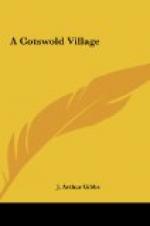There are but few snakes or vipers in the district of which I am writing. But quite recently a man found a large trout about eighteen inches in length lying dead in the Coln, and protruding from the mouth of the fish was a large snake, also dead. The snake must have been swimming in the water (as they are known to do occasionally), and the trout being in a backwater, where food was scarce, must have seized the snake and choked himself in his efforts to bolt it This was a remarkable occurrence, because a Coln trout is most particular as to his bill of fare, and snakes are certainly not usually included in the list. There is such a plentiful supply of larvae, caddis, “stone-loach,” fresh-water shrimps, crayfish, and other crustaceans, to say nothing of flies, minnows, and small fry, that a trout would very seldom attack a snake. A large lobworm, however, as every one knows, is a very attractive bait for any kind of fresh-water fish except pike.
Stoats with reddish-brown backs and yellow bellies may often be seen hunting the rabbits, and the little weasels may sometimes be drawn out of their holes in the walls if one makes a squeaking noise with the lips. Stoats usually hunt singly, weasels in packs and pairs.
But we must leave the woods, for the evening shadows are lengthening and the “golden evening brightens in the west.” It is time to go up to the cornfields on the hill and see the sun set. I have said that there is no path through this wood; it is sacred to foxes. They are not here now, however; they will not be back till all the corn is cut. The wheatfields are their summer quarters.
It is no easy matter to get out of a tangled wood in August. The stinging-nettles are seven feet high in places; we must hold our hands high above our heads and plough our way through them. When we finally emerge we are covered from head to foot with large prickly burrs from the seeding burdocks, as well as with the small round burrs of the goose-grass. Then




